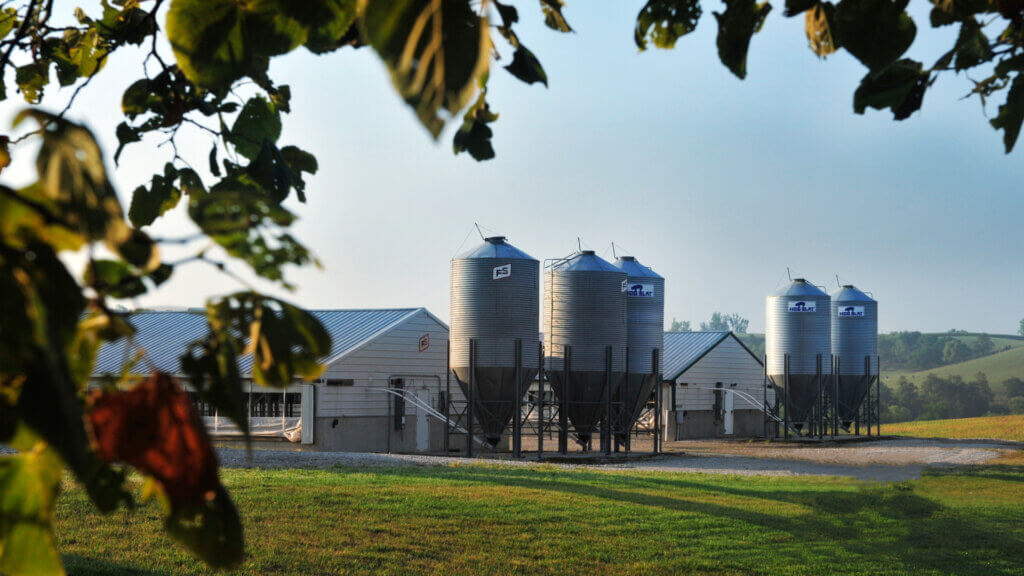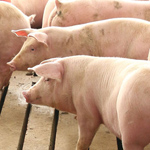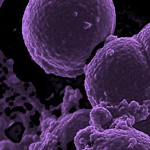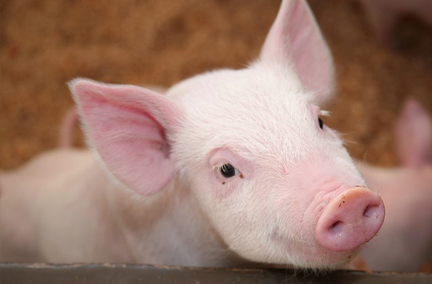
SHIC, launched by the National Pork Board in 2015 solely with Pork Checkoff funding, continues to focus efforts on prevention, preparedness, and response to novel and emerging swine disease for the benefit of US swine health. As a conduit of information and research, SHIC encourages sharing of its publications and research. Forward, reprint, and quote SHIC material freely. SHIC is funded by America’s pork producers to fulfill its mission to protect and enhance the health of the US swine herd. For more information, visit http://www.swinehealth.org or contact Dr. Sundberg at [email protected].

2022 Plan of Work adjusted to reallocate budget for new program
At their June 29, 2022, meeting, the Swine Health Information Center Board of Directors voted to proceed with a revision of its 2022 Plan of Work to fund a new program on finishing phase biosecurity. SHIC’s Board approved reallocation of $1 million from the 2022 budget for the program to be developed in response to disease data from its Swine Disease Reporting System and other recent finishing phase disease outbreak investigations. SDRS data is shared monthly with SHIC stakeholders on its website and in its newsletter.
“SHIC’s structure allows us the ability to react quickly to needs in the industry and reprioritize our efforts, all with the goal of protecting the health of the US swine herd,” remarked Daryl Olsen, DVM, chair of the SHIC Board of Directors. “Needs were identified and a plan to place new focus on finishing phase biosecurity was presented, earning the Board’s approval and support to find the answers.”
The new program will specifically address the finishing phase of swine production, an area where recent data and SHIC Rapid Response Teams’ investigations illustrates an ongoing industry vulnerability. In turn, the vulnerability in the finisher increases disease pressure on the breeding and farrowing phases, where biosecurity measures have historically been focused. Examples cited include: 1) Actinobacillus pleuropneumoniae serotype 15 outbreaks in Iowa-based finishers, 2) evidence of porcine reproductive and respiratory syndrome virus outbreaks in finishers preceding outbreaks in sow barns, and 3) nursery and finisher sites being implicated as sources of increased porcine epidemic diarrhea virus outbreaks. This led SHIC to recognize the need for a new focus on the finishing phase of production. The program will concentrate on cost-effective new technologies and research into biocontainment, bioexclusion, and transport biosecurity.
“Measurable data makes it clear there are patterns in biosecurity gaps at the finishing phase of production needing to be addressed,” commented Megan Niederwerder, DVM, PhD, Associate Director of SHIC. “We were able to quickly but carefully develop a research program in response to this industry challenge with a goal of identifying solutions for producers and veterinarians to close the biosecurity gaps and protect the health of their herds.”
As part of the proposed program, SHIC will create an advisory group to help develop specific, researchable questions for the topic areas of transport biosecurity, bioexclusion, and biocontainment. They will also collaborate and communicate across the pork industry, ensuring there is coordination and no overlap in investigations for research to provide the greatest return on investment.

Biosecurity typically focuses most intensely on breeding herd facilities. A group of researchers from Iowa State University, led by Dr. Derald Holtkamp, is looking into growing-pig site biosecurity gaps by following PRRS, PEDV and PDCoV infections and investigating a regional Actinobacillus pleuropneumoniae (APP) outbreak. Initial findings are shared in a recent report. More analysis of the data containing red flags is ongoing but Dr. Holtkamp cautioned, “If we ever get ASF or another FAD in the US, and we don’t detect it very, very early, it’s going to spread because of a lack of ability to prevent transmission from one herd to another.”
Of the 75 groups of pigs followed from nursery to marketing in the first study, only two stayed negative for PRRSV. All were negative for PRRSV and coronaviruses at placement. Dr. Holtkamp reports there are some interesting patterns in the data and said one thing stands out – how closely correlated the frequency of events (movements, deliveries, maintenance, etc.) are with positive tests for PRRSV, PEDV, and PDCoV, in both the nursery and finishing phase. While PRRSV outbreaks occurred primarily in the finishing phase after movement, coronavirus (ie., PEDV) positive tests were more frequent in the nursery stage. TGE was never detected in any of the groups. Find the Industry Summary of the report at https://www.swinehealth.org/results/ and search for 20-073.
“The larger number of events in bigger groups of pigs, the more likely they were to go positive,” Dr. Holtkamp remarked. An initial review of results points to livestock transportation as an area needing more diligence. “The timing of the breaks in the finisher phase for PRRSV were frequently associated with the timing of pig movement events from the nursery to finishing phase sites,” he observed.
Other analysis surrounding four groups of pigs known to be negative from the sow farm then tested positive very early points to the nursery barns where they were placed. It was known previous groups in those barns were tested positive – four for PEDV and three for PDCoV. The pigs picked up the viruses either via transport or in facilities not properly washed and disinfected.
As this study was taking place, an outbreak of APP was identified in a 400-square mile area of central Iowa from late 2021 through early 2022. Dr. Holtkamp leads a team investigating the spread. “This was a unique situation when from November through April, the only positive cases for APP serotype 15 were diagnosed in a very small geographic area,” he explained. The results of the investigation of seven individual groups of pigs affected by the outbreak revealed that rendering was likely involved in transmitting the bacteria to several of the groups. Additionally, in one circumstance, a caretaker helped remove carcasses from one APP-positive site and then visited another site on the same day without changing boots and coveralls, which then subsequently broke with the bacteria.
More information on the APP investigation will be made available as the study is completed. The results of both the growing pig biosecurity study as well as the APP investigation provide clear results pointing to the need for better growing pig facility biosecurity. “If an FAD is found in this country, we can’t wait until after that to figure out how to do rendering more safely,” he concluded. “These are red flags telling us we must be prepared so we don’t spread an FAD all over before we realize it.”

The Iowa State University Veterinary Diagnostic Lab received 22 porcine fetuses from six litters originating in Mexico in the spring of 2020. After extensive testing, metagenomic sequencing identified a new virus in the genus Morbillivirus (porcine morbillivirus or PoMV) from the fetal tissues. Other currently known members in the genus Morbillivirus, including measles virus, rinderpest virus, peste des petits ruminants virus, canine distemper virus, phocine distemper virus, cetacean morbillivirus, and feline morbillivirus, are highly contagious pathogens and can cause serious human and animal diseases.
Although PoMV was identified from porcine cases with fetal death, encephalitis, and placentitis, the etiological role of PoMV had not been determined. Further, it was unknown if PoMV was present in the US swine population. Researchers from ISU and the USDA ARS investigated these gaps in knowledge with SHIC funding.
To determine if PoMV was present in the US swine population, various tissues from neonatal mortalities and mummified fetus banked samples submitted to the ISU VDL were subjected to PoMV rRT-PCR. A total of 450 clinical samples from all over the United States (brains, lungs, and spleens from neonatal mortalities, stillbirths, and mummified fetuses) were tested. Testing to date has not detected PoMV in US swine samples.
Isolation of PoMV in various cell lines using four available PoMV PCR-positive tissue homogenates was also attempted. Since no cytopathic effect was observed and no PoMV-specific antibody for immunofluorescence staining was available, researchers tested the cell culture lysates at different passages by PoMV rRT-PCR to determine virus isolation outcomes. Based on PCR results, no PoMV isolate was identified that is capable of efficient replication in cell culture. As no additional PoMV PCR-positive clinical samples from Mexico could be obtained, efforts to optimize conditions for further VI attempts are limited. However, if more PoMV PCR-positive samples become available in the future, further VI attempts would be warranted.
Paramyxoviruses that are known to naturally infect swine include porcine rubulavirus, Menangle virus, Nipah virus, and porcine parainfluenza virus. There are reports of less well-characterized paramyxoviruses associated with central nervous and respiratory disease in pigs. However, none of these viruses are classified in the genus Morbillivirus.

A SHIC-funded report evaluating diagnostic data on porcine circovirus type 3 obtained during 2016-2018 by the University of Minnesota Veterinary Diagnostic Lab has been posted. Under the direction of Dr. Albert Rovira, the study objectives were to determine associations between PCV3 presence and quantity with lesions and clinical signs. Results showed PCV3 may cause death in fetuses, myocarditis, and systemic vasculitis in pigs. This data is helping to contribute to an ongoing SHIC-funded study to determine an applicable US case definition.
PCV3 was first identified in the US in 2016, associated with cases of systemic disease and reproductive disorders. Multiple studies performed after its discovery showed PCV3 is widespread and has been present in the US pig herd for decades. It can be found in multiple tissues and samples, as well as in pigs with clinical disease and in healthy pigs. Overall, the role of PCV3 in causing disease is poorly defined.
In the newly posted Rovira study, the relationship between PCV3 antigen and clinical disease was investigated based on a large dataset of diagnostic cases. PCV3 was detected in approximately 20% of pigs with tissues submitted to the UMN diagnostic laboratory. Samples with the highest PCV3 quantity were detected in fetal lesions of myocarditis and systemic vasculitis. Although no significant associations were identified between PCV3 antigen detection with the clinical description on VDL submissions, there was a significant association between PCV3 presence and heart vasculitis/perivasculitis. In PCV3-positive pigs, higher viral loads were significantly associated with pigs having myocarditis, heart vasculitis/perivasculitis, kidney vasculitis/perivasculitis and dermatitis.
Following publication of the Rovira study, SHIC updated its PCV3 Fact Sheet. In it, PCV3 is categorized as an emerging pathogen of swine with potential economic importance. It has been associated with signs similar to those caused by PCV2, including subclinical infections. Overall, PCV3 has been associated with neurological disease, reproductive failure, respiratory disease, enteric disease, and porcine dermatitis and nephropathy syndrome.
Both PCV2 and PCV3 are spread through vertical and horizontal transmission. Virus is shed in most secretions and excretions of infected pigs. Direct contact is the transmission route of most significance but spread can also occur via fomites and ingestion. PCV3 has been found in both wild and domestic pigs. Antibodies to PCV3 have been detected in dogs, cattle, and mice. PCV3-positive mosquitoes have been found. Wild ruminants and ticks may also be reservoirs. PCV3 is found in many swine-producing regions of the world. Epidemiological studies have found that infection is widespread, with prevalence up to 100%. A few studies have shown that prevalence is highest in piglets/weaners and decreases with age, but PCV3 has been detected in pigs of all ages.

Olsen, Hill, and Bang elected officers
The Swine Health Information Center welcomed two new board members during their meeting held on June 29, 2022. Kent Bang, Bang Ag Consulting, LLC, Omaha, Nebraska, and Paul Ruen, DVM, partner in Fairmont (MN) Veterinary Clinic, began their terms. Founding board members Matt Anderson, DVM, an owner of Suidae Health and Production, Algona, Iowa, and Mark Greenwood, formerly with Compeer Financial, Mankato, Minnesota, concluded their service.
The new SHIC Board of Directors held election of officers as well. Daryl Olsen, DVM, AMVC of Audubon, Iowa, was chosen to continue leading the SHIC Board as its president. Howard Hill, DVM, Ames, Iowa, was tabbed to remain vice president for the organization and Bang will serve as secretary/treasurer. Other board members are Russ Nugent, PhD, Gene Noem, Jeremy Pittman, DVM, Mark Schwartz, and Matthew Turner, DVM. Paul Sundberg, DVM, PhD, DACVPM, is SHIC’s executive director. Megan Niederwerder, DVM, PhD, is associate director.
Incoming Directors
Bang retired from Compeer Financial in April 2022 after a distinguished career in banking with an emphasis on swine industry lending and soon established his consulting company to serve large clients in the United States.
After earning a degree in Ag Business from the University of Nebraska-Lincoln, Bang worked for Purina and Consolidated Nutrition feed companies. In his role with Consolidated Nutrition, owned by ADM, he worked with swine business clients domestically as well as internationally. He moved from the feed business to work in banking, the majority with the Farm Credit system, including serving as a national lender in the swine industry for Compeer Financial, leading their swine team.
While devoting his career to work in the swine industry, Bang gave of his time as a member of the National Pork Producers Council’s Pork Alliance, served two terms on the NPPC Board of Directors, and two terms on the US Meat Export Federation Board of Directors. In addition, he has been a long-time member of NPPC’s Pork PAC Board of Directors.
“I’ve long been involved in this industry and having been on the NPPC board when SHIC was put together, I’ve been very, very supportive of their efforts,” Bang stated. “What SHIC does is very important realizing one of the industry’s biggest risks is emerging, trade-interrupting disease. I know what kind of challenge it is for us to get the right kind of monitoring in place and just how monumental a task that is.”
Bang looks forward to serving on the SHIC Board, offering his personal experience and expertise. “SHIC has done a great job with such a big task and there’s still work to do,” he remarked. “I hope to contribute to SHIC’s mission. There are a lot of people with a lot of veterinary talent on the Board. I can offer strong contacts in the industry across the country and good working relationships with players in the business of pork production, along with an understanding the structure of this business.”
Dr. Ruen intentionally sought out work in a veterinary practice with a focus on swine involvement following graduation from the University of Minnesota College of Veterinary Medicine. “Being in an industry that’s constantly evolving, with great people, has been a fun and rewarding career,” Dr. Ruen said. While his practice is focused on swine production, Dr. Ruen has also given his time to the American Association of Swine Veterinarians as a volunteer leader, serving on their Board for four years, one of those as president of the organization. “It’s important to me to be involved and give back,” he explained.
As the AASV appointed member of the SHIC Board of Directors, Dr. Ruen anticipates growing his service to the industry. “It’s interesting how that board is set up,” he observed. “It promotes good dialogue with representatives from across the industry. I’m excited to be part of that, have some part of the exchange, as SHIC continues to monitor what’s going on in the world, being prepared and forward-thinking for protecting the US swine herd.”
While serving as president of the AASV Board of Directors, Dr. Ruen had the opportunity to visit the Miami Port of Entry, seeing first-hand how that process works to screen passengers and container ships as they come in. “I am keen to figure out how we can promote and do a better job for the industry to be collaborative with our government, and other governments, to have integrity in that process and continue to be as thorough as we can protecting our food supply and livestock in the US,” Dr. Ruen stated. “I’m also interested in understanding at a deeper level the highest priorities for SHIC, how we balance funds we have and types of resources we can leverage with where the greatest needs are.”
Retiring Directors
Dr. Anderson is also a past president of AASV and held that office when PEDV hit the US herd. This experience shaped his understanding of the gaps in what the US swine industry was able to do, how to prepare, and how to respond. He was supportive of the formation of SHIC, among several other influential industry leaders, and admires the vision held for identifying the need and the role the resulting organization has played. “The work SHIC has done filling gaps that existed in preparing the US industry and helping us respond in real-time has been extremely important,” he explained.
As a director, Dr. Anderson participated in decisions regarding how money is allocated. “Our focus has been on filling an important need as economically efficiently as possible, as prudently as possible,” he said. “Most research is incentivized by potential return for someone selling a product and that left gaps in our ability to prepare for and respond to disease challenges. SHIC’s work to fill those gaps has been quintessentially important.”
Dr. Anderson believes SHIC’s effort to rank diseases relative to their perceived importance to the US industry then preparing for those diseases with the tools necessary to run potential assays has been extremely important. “The work done on the pathways has identified vulnerabilities to the US swine herd which is really, really important information,” he commented.
“It’s extremely rewarding working with people I’ve had the honor of serving with,” Dr. Anderson remarked. “Change is constant in the US swine industry. Vulnerability is constant as well. There’s always going to be the next challenge. My challenge to the future SHIC Board is to remain diligent and focused on what the next challenge will be to protect against it and respond to it.”
Dr. Anderson continues his work at Suidae, a 10-veterinarian swine-specific practice. A graduate of the Iowa State University College of Veterinary Medicine, he has donated time and effort for endeavors to protect customers’ herds from challenges and respond to them as well.
Like Dr. Anderson, Greenwood has served on the SHIC Board of Directors since it was formed. “When I look at SHIC, the mission is to be responsive for the US pork industry to any emerging animal disease issues,” he commented. The Board has been collaborative and nimble, in Greenwood’s view, working for the best interest of the swine industry addressing animal health concerns with economic consequences.
Greenwood appreciates the investment made in SHIC by the National Pork Board as well as the vision of those recognizing the need for separation of duties with SHIC focused on emerging disease issues.
Greenwood retired from a career in ag lending with Compeer Financial in January 2022. As secretary/treasurer of the SHIC Board of Directors, he brought an economic viewpoint, sharing his expertise on how emerging diseases would affect the industry. Prior to being a lender, Greenwood worked in the feed industry, giving him experience working with producers and a broader perspective.
“I would always do my best as secretary/treasurer to make sure we were very prudent with dollars spent,” Greenwood stated. “We invest dollars wisely, recognizing these are pork producers’ dollars, cognizant of spending where we can get a good return on our investment.” He appreciated the debate between Board members to make sure money was spent wisely for the industry, being strategic in their decisions.
Before beginning his career in the swine industry, Greenwood earned a degree in business administration and economics from Mankato State University. “I grew up on a hog farm in southern Minnesota and have seen a lot of changes in the pork industry since then,” he observed. While retired from Compeer, Greenwood is now working part-time for Schwartz Farms of Sleepy Eye, Minnesota.
“It has been an honor and privilege to serve on this board, helping serve the pork industry with a great group of people,” Greenwood said. He has been a long-time member of NPPC’s Pork Alliance and worked with the Strategic Investment Program for NPPC while at Compeer. Greenwood also offered his expertise to NPPC and NPB during the difficult times of 2008-2009 as well as the COVID pandemic of 2020. “Those were extraordinary times I never thought I’d have to address,” he remarked. “I worked hand-in-hand with others in the industry during times of uncertainty and challenge.”

This month’s Domestic Swine Disease Monitoring Report reveals a moderate decrease in PCR detection for PRRSV and PEDV. However, PEDV overall RT-PCR detection in six states (NC, KS, NE, IA, MO, and MN) and PRRSV detection in two states (NE and MO) remains above state-specific baseline levels. Also, PCV2 had a marked increase in the PCR detection in the wean-to-market category. In the podcast, the SDRS hosts talk with Dr. Fernando Bortolozzo, Professor at Universidade Federal do Rio Grande do Sul (Brazil), about pre-weaning mortality: USA x Latin America, the importance of day one care, cross-fostering, and colostrum intake, and implementations to improve pre-weaning mortality. The Swine Disease Reporting System podcast is now on Spotify, Apple podcast, Google podcast, and Amazon Music.

In this month’s Global Swine Disease Monitoring Report, read about ASF in Italy where Lazio region authorities reported the first outbreak in domestic pigs in the country. In Germany, the first ASF outbreak confirmed in domestic pigs in Lower Saxony, the most important production region in the country with about 30% stock of pigs, is detailed. And in the UK, authorities rule out suspected case of FMD where a temporary FMD control zone was lifted after testing confirmed the absence of the disease.
Copyright 2024 | Swinehealth.org | Website by Heartland Marketing Group